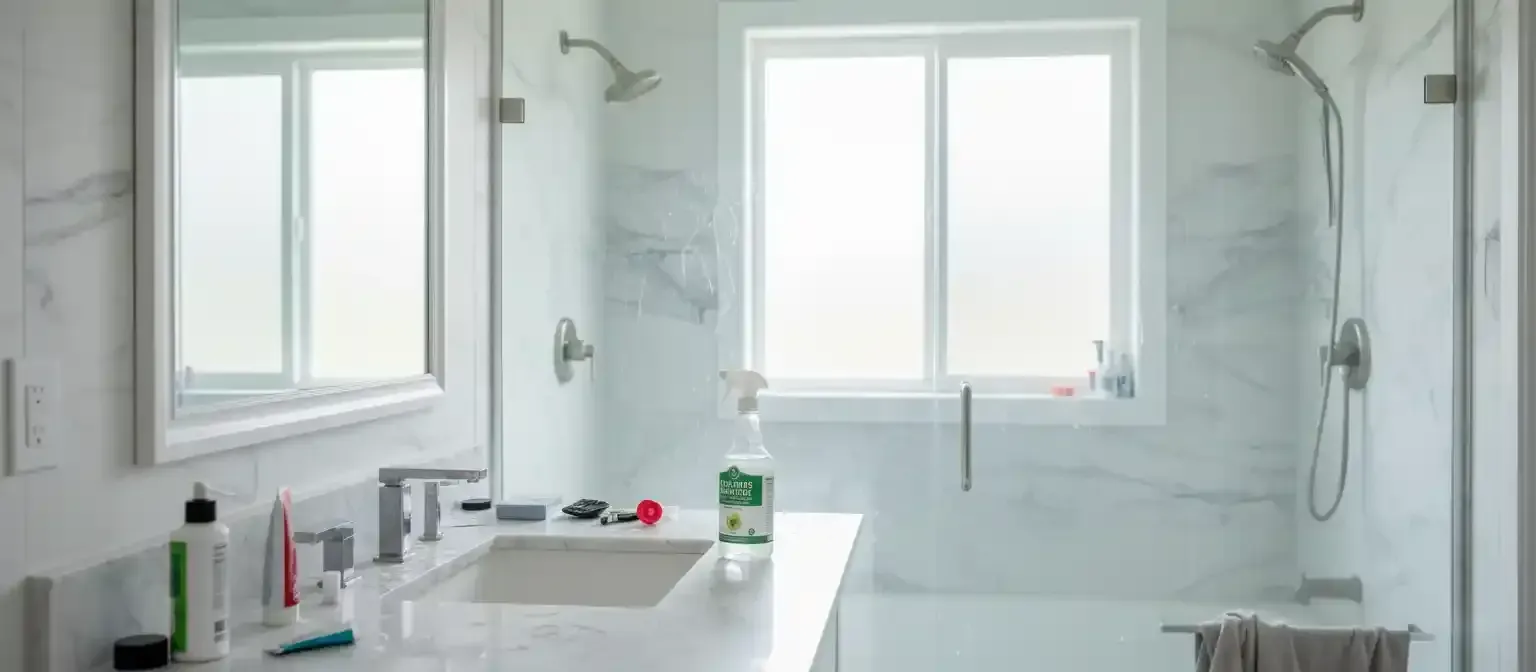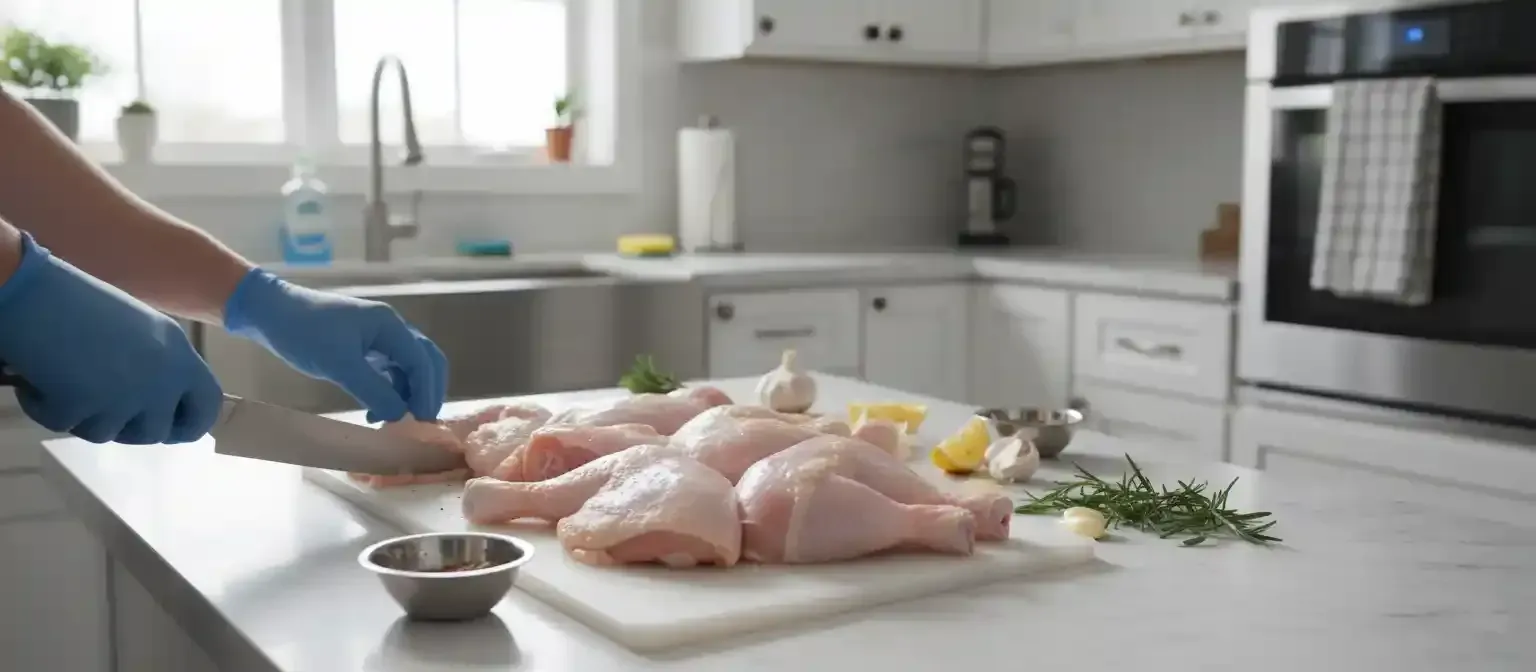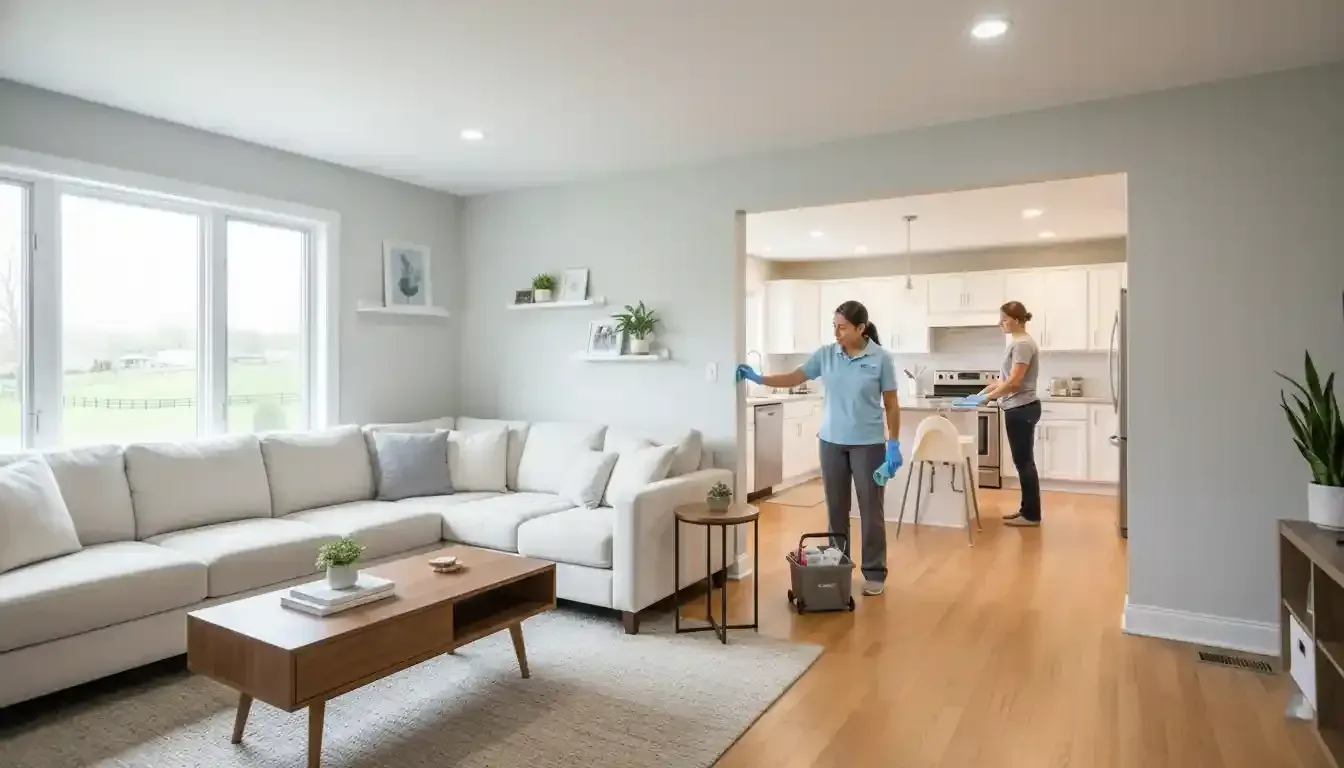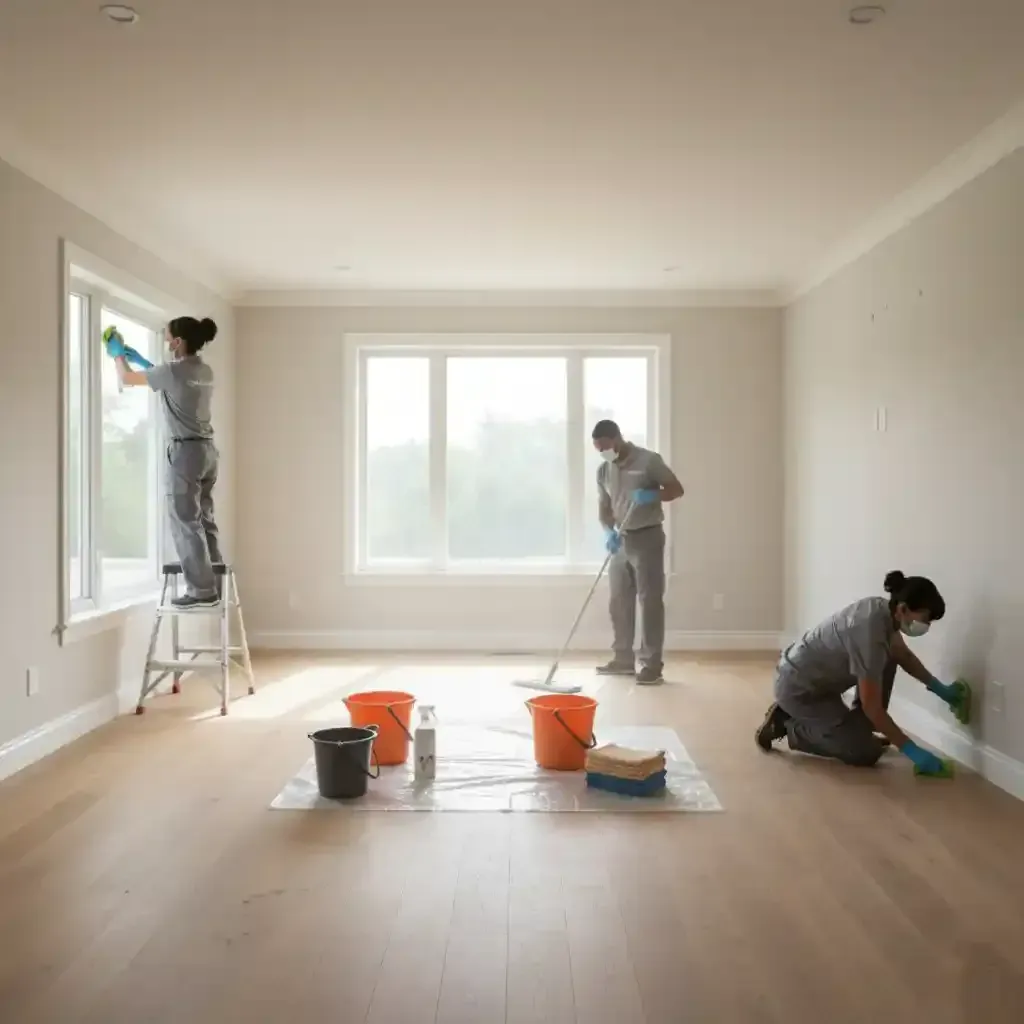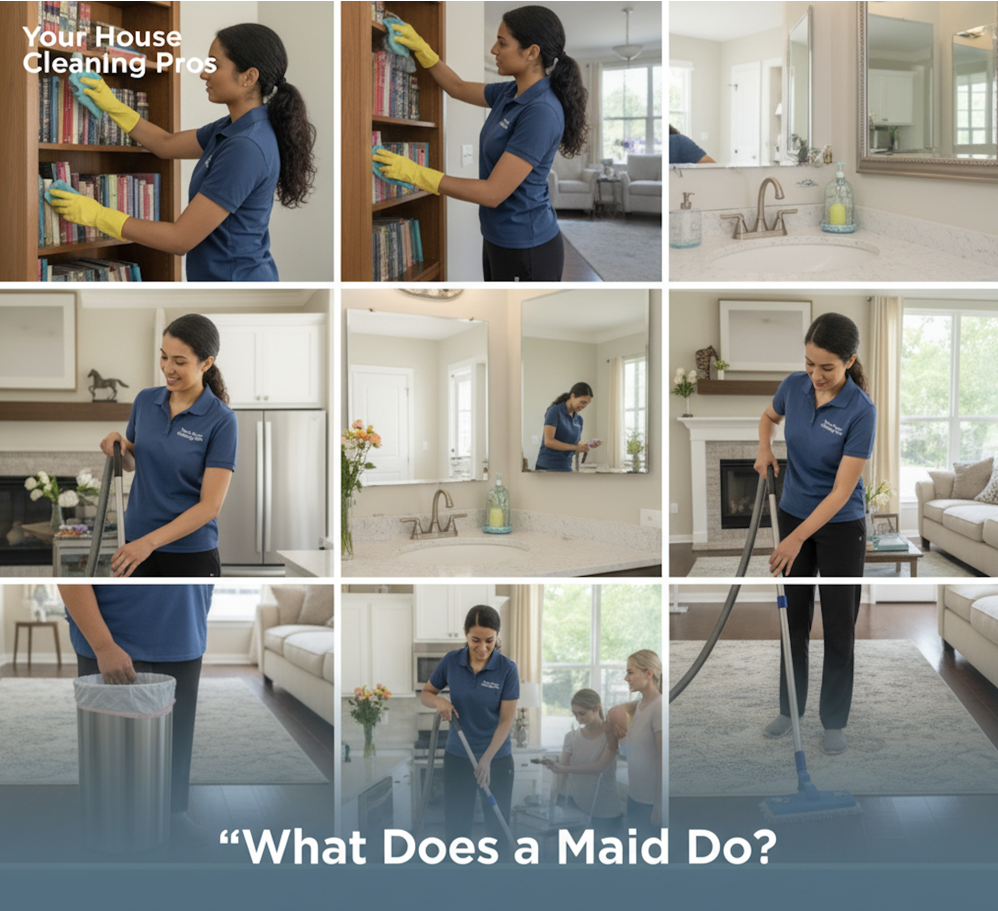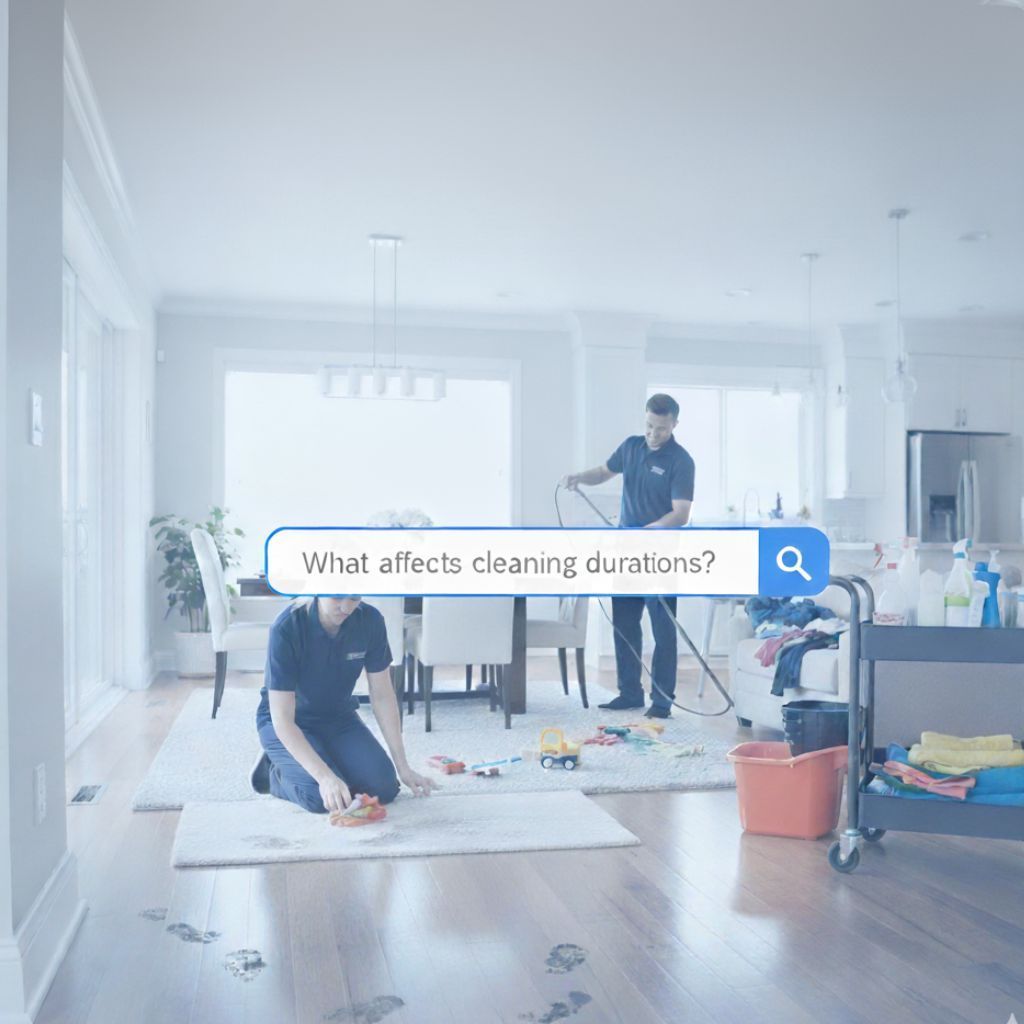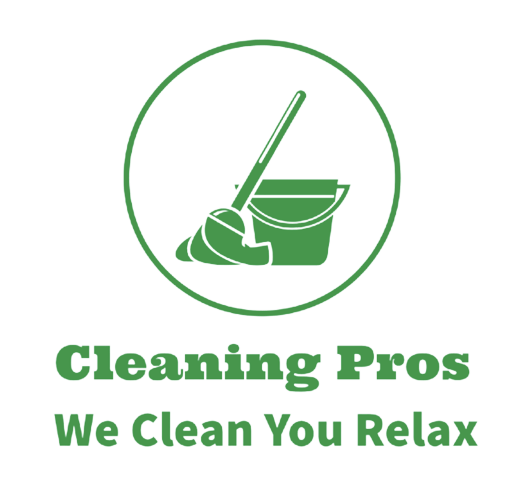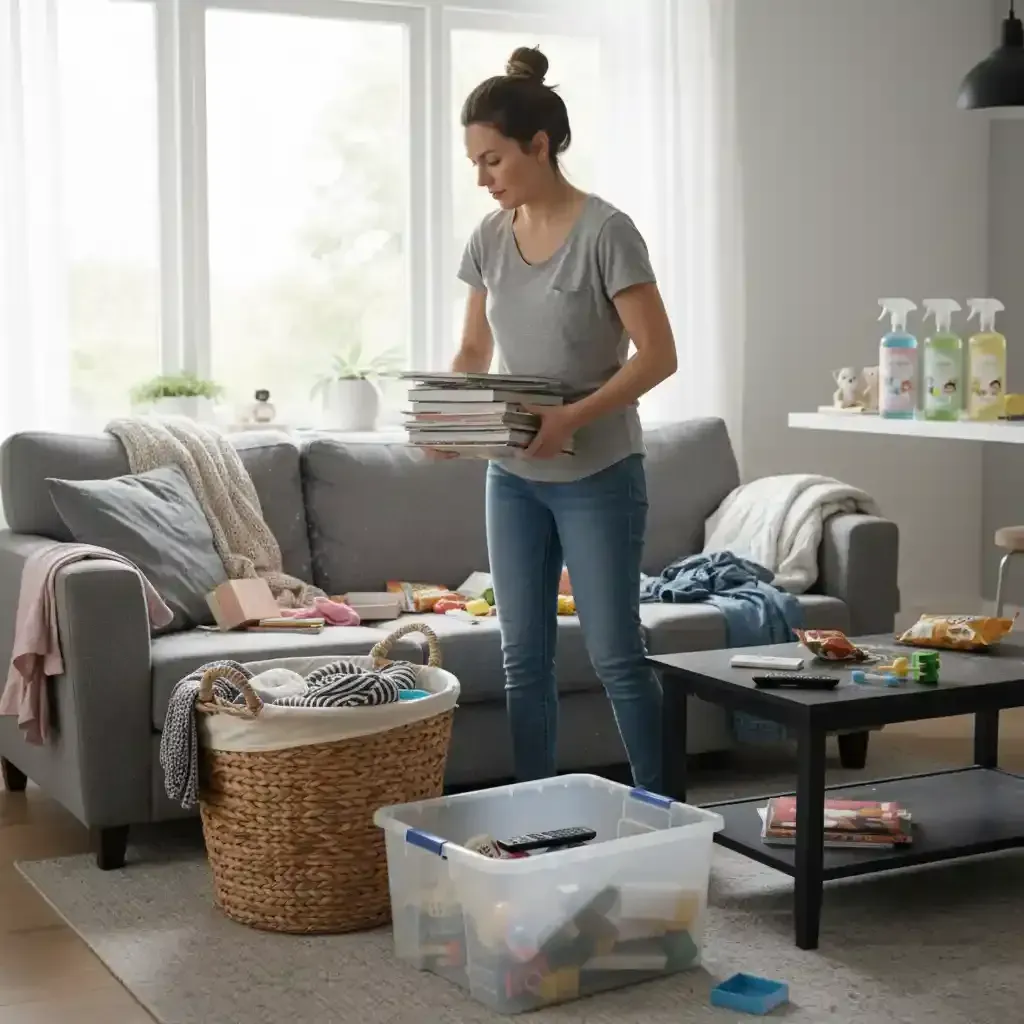The floor-level risk assessment: A new way to choose cleaning products for pets and children

he safest cleaning products for pets and children aren't just those with "non-toxic" labels, but those used within a safety-focused methodology. The best approach is a "Floor-Level Risk Assessment," which prioritizes safety based on how crawling babies and pets actually interact with their environment—through paws, mouths, and low-level inhalation—and tailors your cleaning process and product choice to mitigate those specific risks.
The hidden flaw in "pet-safe" marketing
As a professional in the cleaning industry for over a decade, I've seen a surge in products marketed as "pet-safe," "child-safe," or "natural." This is a fantastic development, driven by homeowners who are rightly concerned about the health of their families. But this focus has created a dangerous blind spot: we’ve become so obsessed with the ingredient list that we've forgotten how safety actually works in a real-world home.
The truth is, a safe ingredient list doesn't guarantee safety from exposure. Think about your cat. After you mop, she walks across the still-damp floor. The cleaner, even if it's a "gentle" one, gets on her paw pads. What's the next thing she does? She finds a sunny spot, curls up, and begins meticulously grooming herself, licking her paws clean. She has now directly ingested a cleaning product, regardless of its marketing claims. This is just one example of how many common cleaning products contain ingredients that are dangerous for pets to "ingest, inhale or even absorb through the skin while moving about and licking their paws."
This is the core problem with a purely product-centric approach. It assumes that if the ingredients are "good," the product is risk-free. It fails to account for the unique behaviors of our most vulnerable family members. A crawling baby exploring the world with their hands and mouth, a dog sniffing every corner of the floor, or a bird sensitive to airborne particles all face different risks than a standing adult. To achieve true safety, we need to shift our thinking from the bottle to the floor.
A smarter methodology: The floor-level risk assessment
Instead of an endless search for the "perfect" product, I teach our clients a simple, effective methodology: the Floor-Level Risk Assessment. It’s a practical way of looking at your home through the eyes—and nose, and paws—of your pets and children. It involves three simple steps: mapping your home's hazard zones, adopting a "two-bottle" cleaning system, and focusing on process over product.
Step 1: Map your home's "hazard zones"
Not all surfaces in your home carry the same level of risk. By categorizing them, you can use the right cleaner for the right job without exposing your family to unnecessary chemicals.
- High-Contact Zones: These are the areas where your pets and children spend most of their time and have direct physical contact. This includes all flooring (wood, tile, vinyl, carpet), low window sills, pet beds, the floor around food and water bowls, and the bottom rungs of chairs. For these areas, the primary goal is to leave behind zero harmful residue. These are your most critical safety areas.
- Low-Contact Zones: These are surfaces generally out of reach. Think kitchen countertops, high shelves, the top of the refrigerator, and bathroom vanities. While you still want to use safe cleaners, a child is unlikely to lick a countertop, and a dog can't reach a high shelf. Here, you have more flexibility to use a stronger disinfectant when needed, as long as you use it safely.
Step 2: Build your "two-bottle" cleaning kit
Based on your hazard zones, you don't need a cabinet full of dozens of specialized cleaners. You primarily need two.
Bottle #1: The Floor-Level Solution (For High-Contact Zones)
This is your daily workhorse for all high-contact surfaces. The single most important quality for this cleaner is that it is a residue-free pet safe floor cleaner. When it dries, it should leave nothing behind for paws or little hands to pick up.
- Excellent Commercial Options: Look for products specifically labeled "residue-free." Brands that focus on plant-based ingredients and simple formulas are often a good start. When looking for a pet safe wood floor cleaner or a cat safe multi-surface cleaner for your floors, prioritize brands with full ingredient transparency. Search terms like "safest floor cleaner for crawling babies and pets" or "lick-safe floor cleaner for dogs" can yield good results.
- Effective DIY Pet Safe Cleaning Solutions: For most routine mopping, a simple solution of one part white vinegar to four parts warm water is incredibly effective. The acetic acid in white vinegar, a common DIY cleaning ingredient, is effective at cutting grease and can prevent mold and mildew buildup. It answers the common question, "what can I use to mop my floor with a dog?" safely and cheaply. It's also a great option for cleaning pet bowls without harsh chemicals. Just be sure to let the scent dissipate before letting pets back in the area. Important: If you make your own cleaner, please remember that a key safety tip is to "Always label any bottles of DIY cleaners with all the ingredients inside... in case a child or animal gets into it."
Bottle #2: The Targeted Disinfectant (For Low-Contact Zones & Specific Messes)
This is your more powerful cleaner for disinfecting kitchen counters after handling raw meat, cleaning bathrooms, or tackling a serious pet mess in a targeted way. Here, you can use a product with stronger disinfecting properties, but it must still be used with care.
- What to Look For: Seek out products that use disinfectants like hydrogen peroxide, citric acid, or thymol. These are generally considered safer than bleach or ammonia-based products. There are many child safe disinfectant wipes and dog safe disinfectant sprays on the market that fit this description.
- What to Avoid: Try to find cleaning products without ammonia or bleach. Also, be wary of products with "fragrance" as a listed ingredient, as this can hide a cocktail of irritating chemicals. For homes with pets, especially birds, VOC-free cleaners for pet households are the gold standard.
Step 3: Prioritize process over product
This is the most critical step and the one most often overlooked. The safest, most organic cleaning product in the world can still be a hazard if used improperly. Your technique matters more than the brand you buy.
- The Final Rinse: For any surface a pet or child will touch—especially floors, crates, or high chairs—do a final wipe-down with a clean cloth and plain water after cleaning. This one extra step physically removes any lingering residue, offering a nearly foolproof layer of safety.
- Ensure Dryness: Never let pets or children onto a wet, freshly cleaned floor. Allow surfaces to dry completely. This prevents the paw-to-mouth transfer that makes even "safe" products a risk.
- Ventilate, Ventilate, Ventilate: Open windows when you clean. This disperses fumes and volatile organic compounds (VOCs) that can irritate sensitive respiratory systems. This is especially important for pets with powerful noses; for example, because dogs have a much stronger sense of smell than humans, harsh chemicals like bleach can be toxic through inhalation. Good ventilation also helps your home smell fresh naturally.
Decoding the real dangers: Beyond a simple "bad ingredients" list
To truly protect your family, it helps to understand *why* certain chemicals are so dangerous. It’s not just about them being "toxic"; it's about the specific ways they can harm a small body. Unfortunately, understanding this is made harder because no federal law requires companies to disclose all cleaning product ingredients on the label, making your vigilance even more important.
Key Chemical Risks & Exposure Pathways
Ammonia
- Primary Risk: Respiratory Irritant.
- Exposure Pathway: Inhalation.
- Why it's a Problem: Ammonia releases powerful fumes that can damage the respiratory tracts of pets and children. A dog's sensitive nose is particularly vulnerable. Found in many glass cleaners and all-purpose cleaners.
Chlorine Bleach
- Primary Risk: Severe irritant to skin, eyes, and respiratory system.
- Exposure Pathway: Inhalation, Skin Contact, Ingestion.
- Why it's a Problem: The fumes are a major hazard, and direct contact can cause chemical burns. If licked off a paw or surface, it can cause severe internal damage. Never mix bleach with ammonia, as it creates toxic chloramine gas.
Phenols (e.g., Pine-Sol)
- Primary Risk: Liver and kidney damage, especially in cats.
- Exposure Pathway: Paw/Skin Absorption, Ingestion.
- Why it's a Problem: Cats lack a specific liver enzyme needed to metabolize phenols. When they walk across a floor cleaned with a phenolic compound, they absorb it through their paw pads. Over time, this can lead to severe poisoning. This is why questions like "is Pine-Sol safe for dogs" (it's risky) and even more so for cats are critical.
Quaternary Ammonium Compounds ("Quats")
- Primary Risk: Skin and respiratory irritation, potential reproductive harm.
- Exposure Pathway: Skin Contact, Ingestion from residue.
- Why it's a Problem: These are common disinfectants found in products like Lysol and many disinfectant wipes. They are designed to be left on a surface to kill germs, which means they are designed to leave a residue. Some ammonium quaternary compounds are linked to reproductive harm in animal studies, asthma, and irritation. This is why simply wiping a surface with a disinfectant wipe and letting it dry is not a safe practice in a home with pets and babies who will inevitably touch that surface. A final water rinse is non-negotiable.
Comparing safety approaches: Product vs. methodology
So, which path should you choose? Relying on product labels or adopting a safety methodology?
The product-centric safety approach
This involves searching online for lists of "best pet safe cleaning products" and trusting the marketing claims on the bottle. You might search for "pet safe cleaning products on Amazon" or "best green cleaning products for pet allergies" and buy whatever has the best reviews.
- Pros: It feels fast and easy. It requires minimal change to your existing cleaning habits.
- Cons: It provides a false sense of security. It fails to account for exposure risks like paw-licking or a baby's hand-to-mouth behavior. It also puts your trust in marketing language that can be misleading, especially when companies aren't required to list all ingredients.
The methodology-based safety approach (Floor-Level Risk Assessment)
This involves assessing your home's unique risks, separating your cleaning tools by "zone," and focusing on safe processes like rinsing and drying.
- Pros: It creates a truly secure environment by mitigating the actual routes of exposure. It empowers you with knowledge, reduces the overall chemical load in your home, and is often more cost-effective.
- Cons: It requires a small, initial investment of time and a conscious shift in your cleaning habits.
Frequently asked questions about safe cleaning
Navigating this topic can be confusing. Here are direct answers to some of the most common questions we hear.
What cleaning products are safe to use around pets?
The safest products are those with simple, transparent ingredient lists that are used as part of a safe process. For floors and high-contact areas, a residue-free cleaner or a simple mix of vinegar and water is best. For other surfaces, look for disinfectants based on hydrogen peroxide or citric acid. Ultimately, any product is safer when you rinse the surface with water afterward, ensure it's dry, and ventilate the area.
How can I make my house smell good without harming my pets?
Many air fresheners, plug-ins, and scented candles release VOCs that are harmful to pets, especially birds. Instead of masking odors, eliminate them. Use baking soda to absorb odors in carpets and upholstery. The best way to get a fresh smell is ventilation—open the windows. You can also simmer spices like cinnamon and cloves in a pot of water on the stove for a natural, safe scent.
What can I mop with that's safe for pets?
For routine mopping, a solution of 1 part white vinegar to 4 parts water is one of the safest and most effective options. If you prefer a commercial product, search specifically for a "residue-free pet safe floor cleaner" and check the ingredients for transparency. No matter what you use, rinsing with a plain water mop afterward adds a crucial layer of safety.
Is Lysol safe for kids and pets?
Lysol products typically use Quaternary Ammonium Compounds ("Quats") as their disinfectant. As discussed, these chemicals are designed to leave a residue and are linked to health concerns. Therefore, Lysol is not a "lick-safe" or residue-free product. If you must use it (for example, to disinfect an area after an illness), it should only be used on low-contact surfaces, the area should be heavily ventilated, and the surface must be thoroughly rinsed with plain water and dried completely before allowing pets or children near it.
Making the right choice for your needs
There is no single "best" solution for every family. The right approach depends on your lifestyle, your concerns, and the time you have available.
For the anxious new parent/pet owner
You're overwhelmed by conflicting advice and just want to know your crawling baby or new puppy is safe. Your best bet is to immediately adopt the "Two-Bottle" approach. Use a simple vinegar-and-water solution for all your floors. The smell dissipates quickly, and you'll have instant peace of mind knowing there's no harmful chemical residue. For other surfaces, get a well-regarded, fragrance-free, plant-based cleaner. The most important habit for you is the final water rinse on any surface your little one might touch. This simple, clear directive cuts through the noise and eliminates the most immediate risks.
For the eco-conscious DIYer
You prefer using natural, homemade solutions and want to avoid commercial products. This is a great instinct. Solutions with vinegar, baking soda, and water are excellent for general cleaning. Vinegar is a fantastic degreaser, and baking soda is a gentle abrasive and deodorizer. Your primary concern should be understanding the limitations of your tools. While effective for cleaning, vinegar is not an EPA-registered disinfectant, so it may not be sufficient for sanitizing after contact with raw meat or in a bathroom. Also, be disciplined about safety: always label your homemade solutions clearly with all ingredients. Your strength is your control over the ingredients; your challenge is ensuring you're using the right tool for the job.
For the busy professional with a family
You value safety and a clean home, but you simply don't have the time to research every ingredient or add extra steps to your cleaning routine. For you, convenience and trust are paramount. The most effective and time-saving solution is to partner with a professional cleaning service that already understands and implements a methodology like the Floor-Level Risk Assessment. When vetting a service, ask them specifically about their process. Don't just ask if their products are "pet-safe." Ask them: "How do you ensure no harmful residue is left on my floors? What are your procedures for disinfecting while keeping my pets and children safe?" A quality, expert service will have confident, detailed answers that align with the principles of process-based safety.
Ultimately, creating a safe home is about being intentional. By shifting your focus from the product label to the process of cleaning, you empower yourself to protect your family in a more meaningful and effective way. Whether you choose a DIY path, carefully selected products, or a trusted professional partner, this methodology provides a reliable framework for a truly clean and safe home.
Here at Cleaning Pros Lexington KY, we have built our entire cleaning process around this floor-level safety philosophy. We understand the unique concerns of households with pets and children because we're part of the same community. Our teams are rigorously trained to use the right products for the right zones and to ensure a residue-free finish on all high-contact surfaces, giving you peace of mind without adding to your workload. If you're in the Lexington area and want a home that's not just clean, but truly safe for your entire family, contact our expert team today for a personalized assessment and a free, no-obligation quote.

